
The business of pest control is intricately tied to the sale of plants,
and yet public opinion on its implementation is quite polarized
The business of pest control is intricately tied to the sale of plants, and yet public opinion on its implementation is quite polarized – with some people viewing it as a necessity and others considering pesticides as the enemy of the environment. This aspect of the nursery trade is also changing quite rapidly with municipal pesticide bans, the delisting or removal of domestic pesticide products by the federal government and public demand for alternative (but effective) control methods. As a result, garden centres are often caught in the middle of opposing opinions and yet as horticultural professionals, we still have an obligation to provide some degree of local pest control advice.
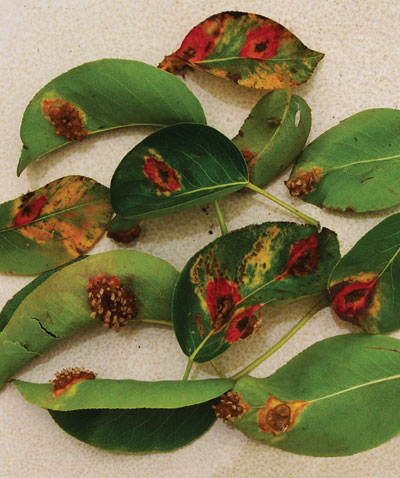 |
|
| Pear trellis rust may look severe, but the solution is simple if acted upon early enough. Advertisement
|
First things first
Garden centres that sell pesticide products are required by provincial legislation to be licensed, as are those individual staff members who deal with pesticide sales. Following integrated pest management (IPM) practices, it is our job to first identify the plant affected as well as the pest or problem. This can be through samples brought in plastic bags or by digital photos). Then we need to learn what we can about the environmental factors that may have contributed to the infestation, such as drought, soil type, or sun exposure. We should then ask how the customer would like to remedy the situation.
Only once we’ve done all of that should we be providing them with such options as tolerating minor damage, cultural controls (for example, watering more often or fertilizing to remedy a deficiency), organic controls (barriers) or recommending pesticides approved for use on this plant and pest type.
Simple solutions
Last year the most common local pest problem was aphid infestations on the new growth of fruiting cherries and plums, as well as flowering Prunus ornamentals. Most people came to the garden centre with the idea of purchasing a pesticide to deal with the aphid problem.
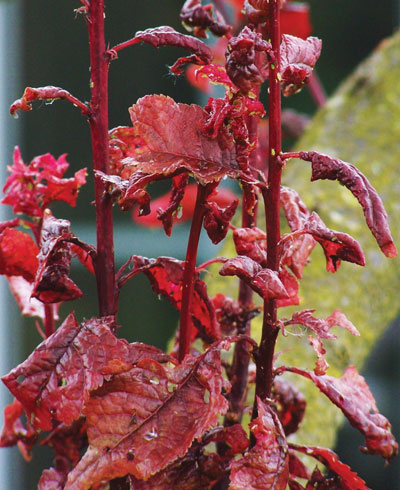 |
|
| Aphid infestations on plum trees can be temporarily solved via pesticide use, but then ants will simply re-establish the population. |
|
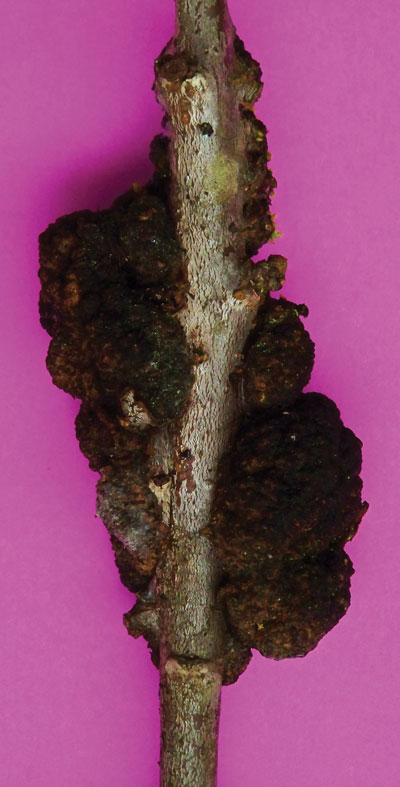 |
|
| Black knot fungus will make many a garden centre client uneasy, but some careful and well-timed pruning will usually solve the problem. |
|
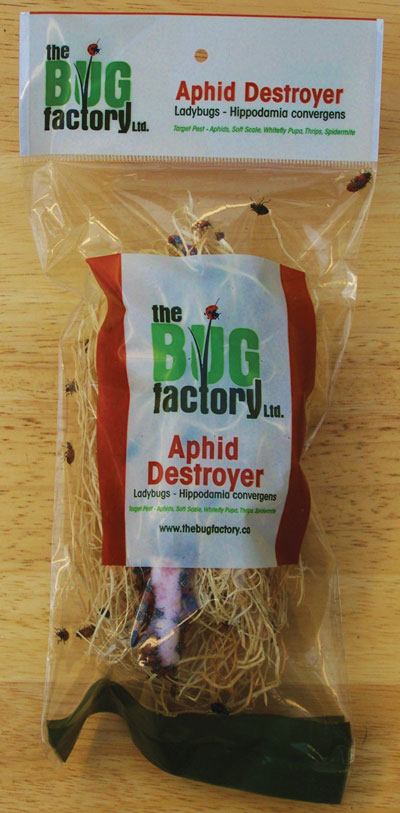 |
|
| Non-toxic solutions like ladybugs can be stocked to offer customers more options. The key is taking the time to educate the customer.
|
When I explained to them how ants rear aphids in their nests, bring them up into the trees and eat the undigested sugars or honeydew secreted by the aphids, most of them immediately confirmed the correlation between the two.
Spraying would eradicate the existing aphids, but it wouldn’t be long before the ants would simply replace them. The solution was to put a Tanglefoot (sticky paste) band on the affected tree trunk to block the ant traffic and to use a hard spray from a garden hose to dislodge the existing aphids or release ladybugs to eat them.
No pesticides proper were needed, yet a sale was made in regards to the sticky paste (or ladybugs), and the customers left satisfied, knowing that they had a permanent solution to their ongoing problem. They had also increased their gardening knowledge, and perhaps got something from the visit to the garden centre that would keep them coming back.
If they weren’t content with the hard spray method or ladybug release, they were then shown the low-impact organic-based pesticide Trounce (a combination of insecticidal soap and pyrethrin, a botanical extract), which is quite an effective aphid control and can be used on many common garden pests.
Giving reassurance
Quite often the first thing our customers want when they come in with a pest problem is some reassurance, an indicator that somehow the problem isn’t as bad as it looks – as even just knowing what they are dealing with will alleviate most people’s concerns.
Diseases such as black knot of plum or pear trellis rust may look rather ominous, but will only cause long-term damage if they are left to their own devices for many years. In the case of black knot, the fungal swellings are simply pruned out of existing branches, or pared off permanent scaffold branches and the trunk, and the trees are sprayed with lime-sulphur at the appropriate time. For pear trellis rust, it is a matter of removing the affected pear leaves or the alternate hosts to this fungus, which are most junipers (J. squamata and J. horizontalis are resistant) before mid-August, as this will break the cycle of the disease.
In both cases, you are able to offer simple solutions that do not involve pesticides, and again have created a more educated customer.
Modern pest control
The days of spraying the entire garden to control a specific pest on one shrub, or using systemic pesticides every time we notice a little nibble on a tree leaf are thankfully over. Most of these chemicals (that is, organophosphates) did long-term environmental damage and their overuse (exceeding the label rate) was quite a common practice. Many gardeners shared the mistaken view that more chemical was better when it came to pest control.
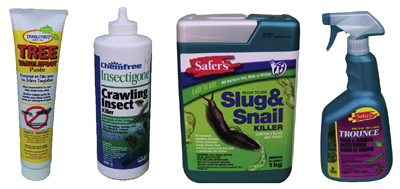 |
|
| Left to right: The use of barriers like paste, and then a hard spray to dislodge the insects, will provide a long-term and safe solution to aphid infestations, but first the client needs to learn how the pests got there in the first place – ants. Diatomaceous earth is a safe option for dealing with crawling insects that your customers may not know about. Slug bait will deal with these pests without risking the health of your pets. If clients still want the pesticide option after they are shown alternatives, there are still lower-impact organic versions to offer. |
As the garden professionals in our respective communities we need to instil in our customers a reasonable level of knowledge in regards to common local pests and their controls, a tolerance for minor infestations, and an awareness of how individual garden practices can impact the environment around them. We can do this through in-house seminars, articles in the local newspaper, and most importantly by emphasizing those practices in our everyday interactions with customers.
Just having a good selection of organic-based control options – such as pet-safe slug bait, diatomaceous earth and predatory insects (that is, ladybugs for aphids, nematodes for lawn grubs) – will encourage their use and bring us all closer to having healthier gardens without harming the planet that we all call home.
Print this page